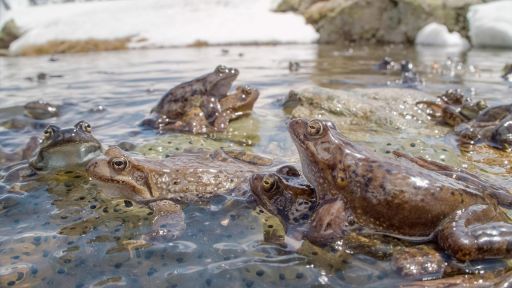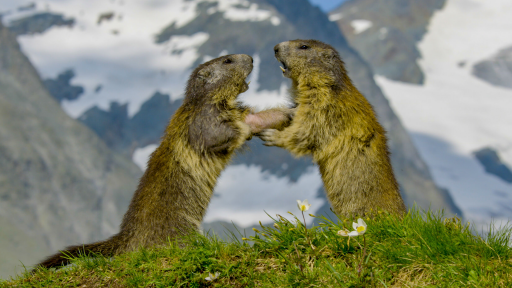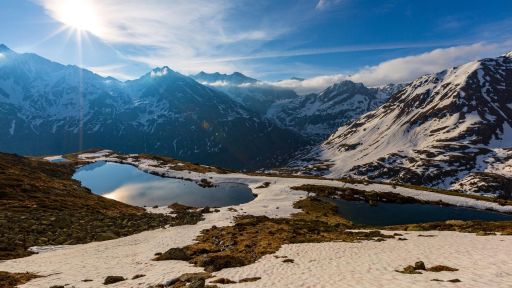Go behind the scenes of NATURE’s two-part miniseries “The Alps.” The filmmakers braved frigid climates and tough terrain to capture the intimate moments of the animals living in the Alps.
Features



- [Translator] Seeing the Alps from the privileged perspective of an eagle, that was simply stunning.
When the sun comes up, and you are up there, above Mont Blanc or the Matterhorn, that's quite a unique sensation.
It's something that otherwise only helicopter pilots get to enjoy.
As natural history filmmakers, we feel privileged to share it.
Working in the most beautiful places on Earth sometimes also involves this, flying over the Alps in a copter to get these spectacular aerials.
The comfort and ease of a copter is the opposite of climbing up to the filming locations for chamois and ibex.
Especially during the winter months, when the ground is frozen or the snow is deep, you have to be able to rely 100% on your partner.
Seth, don't walk in my steps, or you'll crack the surface too much.
We have to get back down again.
This was a 3,000 feet climb on rough terrain, with 60 pounds on our backs.
Now we're gonna film ibex.
Camouflage and disguise.
You need to melt into the environment, not stick out like a sore thumb.
Whatever animals you film, you need to adjust to them.
(Otmar speaking in foreign language) Operating two cameras simultaneously may seem unusual, but I regard it as one of my specialties.
I place the second camera in a position where I cannot be, because I would be too close to the animals.
(Otmar speaking in foreign language) Second camera is remotely controlled from my hide.
It gives me great footage for the edit, as if another cameraman had been there.
The fewer people you have on location, the better your chances to capture great moments.
We were filming bears in a forest.
There was a female with a cub some 50 yards away.
Shooting light was gone.
I had to spend the night in the hide, unable to get out.
And then I heard a rustle in the dry leaves on the ground, like someone walking right next to the hide.
I thought, this can't be the bear.
And then I heard loud sniffing, getting really close, and the bear tried to push the camera lens into the hide with his nose.
So I screamed and stomped the ground.
The bear jumped back with a loud roar, but kept hanging around, scary.
(Otmar speaking in foreign language) I thought, what can I do? It's dark.
I've got no chance. I can't leave the hide.
I can't call for help.
In such moments, you just hope to see the sun rising again.
(wind gusting) Okay, we've got the slider ready.
We're at about 10,000 feet, waiting.
The plan was to film firm clouds developing around the Matterhorn, coming up from Italy.
But the sky closed completely.
It's about 13 below zero now.
We hope that something will happen in the sky.
Otherwise the day will be wasted, which does happen when you shoot natural history.
(Otmar speaking in foreign language) The best scripts are written by nature itself.
Many things happen which we never expected.
We came up here to film the roe deer, following the snow melt, moving up the slopes.
And after three days, we had some good shots, but not all we wanted.
Suddenly in the distance, we saw some dark spots hopping across the snow.
We had planned to film brown frogs in another valley.
So we decided on the spot, let's cover the frog mating right here and now.
We quickly fetched special equipment, and underwater camera and a crane, in order to get close enough.
I was fascinated by these images.
Two days later, the action was over.
We'd been so lucky to have caught the perfect moment.
My number one rule is leave the location as if you had never been there.
That's really important to me.
This is nature, and you need to be grateful that it's granted you that gift.
It all boils down to this, wait for nature to do what it will do.
Deer and chamois should never know that they've been watched.
(goats bleating faintly)
